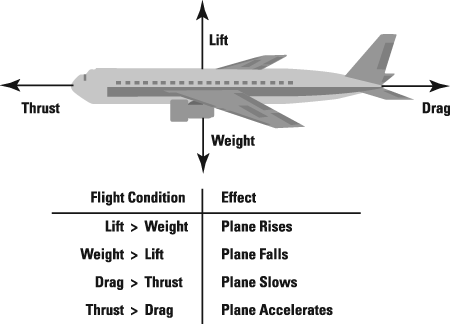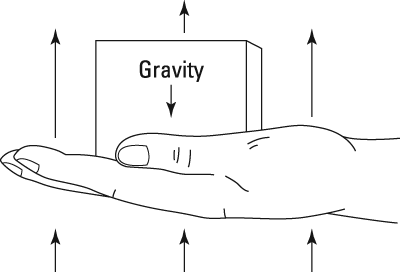In the following practice questions, you need to apply both theory and common sense to tackle the problems, which include figuring out how a plane gets off the ground, and predicting which way a block will move when gravity and muscle power are no longer equal.
Practice questions
The first question refers to the following diagram from NASA’s Glenn Research Center website.- For the plane to take off,
Write the appropriate answers in the boxes. A. lift > weight B. weight > lift C. drag > thrust D. thrust > drag
The next question refers to the following figure, which is excerpted from Physical Science: What the Technology Professional Needs to Know, by C. Lon Enloe, Elizabeth Garnett, Jonathan Miles, and Stephen Swanson (John Wiley & Sons, Inc.).
- Work is defined as the product of force times displacement. Consider the diagram. If the force of gravity is greater than the forces being exerted by the muscles controlling the hand, what would happen?
A. Nothing would happen. B. The hand would move downward. C. The hand would move to the right. D. The hand would move upward.
Answers and explanations
- The correct answers are Choices (A and D).
For a plane to take off, it must accelerate and rise. In order to do that, lift must be greater than weight and thrust must be greater than drag.
- The correct answer is Choice (B).
If the force pushing down is greater than the force pushing up, the hand would move down. Although this question is based on the given diagram, which gives a general idea of what happens when a hand holds weight, the answer to the question is in the first part of the question itself. If the force of gravity (the downward force) is greater than the force of the muscles moving upward, the resultant force would be downward.



